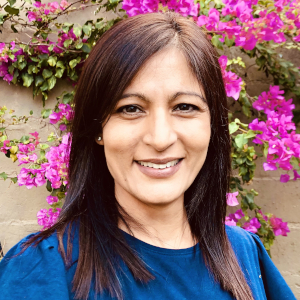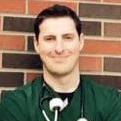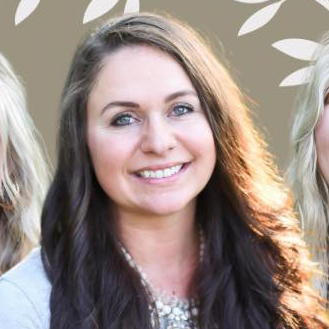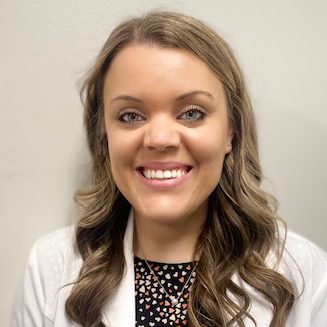Praise For: SOT® Pediatric Online Certificate Program
Hear directly from our students about the benefits of our program.
No results found.
-

Dr. Bhavina Dhanji
Three great takeaways from this course: 1. Clearer, More Structured Paediatric Assessment Framework 2. An excellent system for evaluating infants and children through: refined cranial, spinal, and dural tension assessment 3. A great understanding of segmental motion, tone, and developmental movement patterns.
This course has greatly enhanced my skills and confidence in assessing and treating infants. I now have a clearer framework for identifying tension patterns and applying gentle, effective techniques. Personally, it has fueled the “why” in terms of my passion for paediatric care.
During a follow-up with a 3-month-old infant presenting with frequent arching, irritability, and mild feeding difficulties (often associated with reflux-related tension). The palate arch was very narrow which caused latching issues. I applied a gentle occipital cranial release as taught in the SOT course to balancing cranial motion. Also did a Sphenoid Flexion Release via Pterygoid Contact Outcome: Within a few sessions, the infant was noticeably calmer neck and head posture improved tolerance of feeding positions, reduced arching and easier settling for sleep Parents reported the baby was more comfortable and content, and feeding sessions were smoother, less arching noted and generally the family was all round so relieved.
Yes, it is a great way to learn new adjustment skills, up-skill and improve pediatric care for the community. Improves networking with other health care professionals.
-

Andrew Johnson, DC
“1. It gives a good foundation for infant and pediatric adjusting techniques and protocols that help take any guesswork out of seeing patients in this age rage.
2. Ten months is a long time to commit to a class and might seem intimidating at first, but the pacing is done well enough that even if you fall a few classes behind it’s easy to catch up and not feel overwhelmed
3. There is a lot of information and some of it is definitely more immediately applicable in day to day practice, but I can see the importance of everything that was provided. In fact I never once felt like I was just being given filler information to draw anything out.
I originally took this class because I wanted to get more comfortable with seeing patients in this demographic. While I do feel more confident in my abilities now I also feel like this has opened up a whole new world regarding my understanding of early childhood development and the importance of the work we do. Basically While I do have a little more confidence in my abilities I also now know enough to understand how little I actually know. It’s kind of caused a bit of a prospective shift with how I understand my adult patients as well.
I have a few younger patients who are afraid of adjusting because it looks like it hurts mom/dad and they’ve had chiropractors in the past that treated them like little adults and it was uncomfortable. So doing a few of the evaluations and adjustments I learned in this class have helped at least three kids in my office start to trust and benefit from chiropractic to the point that they’ve told a parent that they wanted to come back to see me. I’ve specifically used some of the newborn assessment tools and adjustments to help a few babies with feeding issues and dural restrictions. Additionally I now have a few tools to help young patients dealing with ADD and ADHD.
I’d pretty much recommend this course for all the reasons I previously stated. Additionally I really wish for all the money I spent on grad school they could have spent at least one class teaching about pediatrics and infants. That being said, this course was definitely better than anything a school you probably offer as a core curriculum so it’s definitely worth the time and cost.”
-

Dr. Candace Seuferer
“Taking this program has given me the knowledge to evaluate patients and give them the proper diagnosis to help move forward in their treatment plans. I am now able to assess plagiocephaly and have the skill set to help these patients in hopes to avoid the need for further modalities.
I absolutely love using the Occipital Lines as well as the trapezius fibers to help find where my patients need TLC. I openly talk to my patients about what I am feeling and doing and they love hearing about it! It has absolutely helped my table talk not only for pediatrics (to their parents) but for my adult patients as well. I am now assessing cranial bones on ALL of my patients. The adults love it for their sinus issues while my pediatrics are benefitting by their latches becoming stronger which means less gas and less colic.
I would recommend this course to others as a way to learn a new skill-set to better serve our patients. I loved that it was a yearlong course so each week I came to my patients with more information and more techniques to use.
I have nothing but great things to say about this course. The videos were descriptive; they come with a transcript as well as a workbook! You can ask questions on each video via the comment section, you can email the instructors, or you can ask your questions during the Doctor Share videos. There is no way you can fail this because they give you absolutely every tool you: need to succeed.
I appreciate you both so much! I appreciate your availability to help us. I appreciate your patience as I completed the course. I appreciated the positive feedback. I am so excited about your program that I am already starting to save up for future classes with you! I hope I am able to attend some seminars so I can meet you both in person! I cannot wait!”
-

Martin Cook, DC
This program is incredibly thorough. Lots of information pertinent to being a great pediatric chiropractor. Gaining and understanding of the material presented provides an incredible skill set that will improve your outcomes. However, staying up to date with the modules is important as the quantity of information is vast. Reviewing the modules to ensure you retain this info is also important. 2) Practice these techniques during the modules and after. This brings greater certainty and skill when applying them to your new and existing practice members. 3) While adjusting a paediatric population can sound and feel daunting at times, if you fall back on the principles taught in this program, it provides answers for the times where you don’t know where to begin. Review the print material regularly so this becomes more natural for you.
Throughout this program, I have found myself becoming more confident in my approach with adjusting kids. Having this improved confidence has also helped improve my certainty, which provides the parents of the children I am seeing with more confidence in me. This shared improved confidence translates into a better outcome as parents choose to continue with care, especially with those more difficult kids that need more care. From this course, I find myself enjoying seeing kids even more and have great joy throughout the day.
For me, the biggest take away from this program was not an application of one specific technique that had an amazing outcome, but the ability to know where to go next. My biggest problem prior to this program was I had lots of information in my head about how to care for the pediatric population, but now how to put it all together. Seeing how Dr. Rosen moves from assessment to correction gave me clarity on ‘where to go to next’. This wasn’t just with one patient, but with every patient, which improved the outcomes for them all and gave me more confidence at the same time.
I would highly recommend the program to anyone considering working with kids. SOT and Dr Rosen & Watson’s approach in applying SOT principles & techniques to kids ensures that you have the confidence and skills to manage all the common and uncommon conditions and syndromes experienced by kids, while also providing confidence to the parents. It delivers an incredible understanding of the anatomy & physiology of the developing baby and blends that with easy to follow and progressive assessment and corrective techniques that are safe, gentle and effective. What more could you want? If mastering chiropractic for the pediatric population is your vision, or if you are just looking for some extra help, this course delivers everything you will need and more.
Thank you both for your dedication to the chiropractic profession, especially the pediatric population & the chiropractors looking to master their skills. The breadth of knowledge you share within the program is incredible and something that I know I will use for the rest of my career. Without the dedication of you both, I fear that not only would some of these techniques get lost, resulting in our ability to care for kids to also suffer, but less chiropractors would also have less enjoyment in their day to day lives. Again, thank you both for your dedication to the profession and the health of kids globally. The profession continues to need masters like you both to help guide the knowledge and skills of less experienced chiropractors. This ensures the greatest possible health outcomes of our pediatric population. This program goes a long way to delivering this.”
-

Dr. Brittany Hennigan
“I wanted to learn more about working with children and infants. I also wanted to learn more about cranial work and SOT. I have taken some courses through ICPA but I wanted something more specific and in more detail.
I liked the convenience of the program. Obviously, most of us are in practice and this is a large time commitment to watch additional videos weekly but if I did fall behind I was able to catch up at my own pace. There were also multiple assignments which were nice. I liked that the doctor share sessions were recorded. Also enjoyed the videos- I think they were easy to understand and follow and gave great details.
This program has given me a lot of confidence to treat the pediatric population. It has also given me the opportunity to allow myself to have more success with the pediatric population. I also have started to use it on adult patients as well.
I have used it a lot when treating babies who have torticollis or have cranial issues.
I would recommend this program. It is great. Very convenient for a doctor that is in practice because I was able to move at my own pace and at the same time immediately implement what I have learned into practice.
Thank you!”
No results found.
Join Dr. Rosen’s Newsletter
Receive updates on our courses and tips on chiropractic technique, practice management, research and philosophy.
The SOT® Pediatric Certificate Program
Demonstrate your commitment to your profession and patients, enhance your skills, and place yourself on the road to mastery in the art of chiropractic adjustment.

